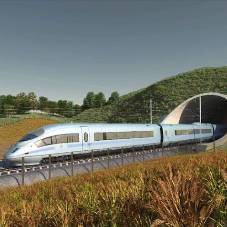One of the issues currently facing the UK construction industry is the use of Brownfield and Greenfield sites. As more and more companies are looking to expand their premises, the need to consider between relocating to a Greenfield site or a Brownfield site where there is existing buildings is increasing. I have decided to take a look at what the advantages and disadvantages are of building on both, and what this could mean for the future.
Firstly, each option has advantages and disadvantages so it is important to assess these according to individual circumstances. As Greenfield sites are vacant, they will be able to provide maximum flexibility for the design and operation of any new facility. On the other hand, Brownfield developments will often require compromises, and are often faced with constraints and lots of ‘red tape’.
One of the major attractions for developers building on Greenfield sites is that essentially they are starting from scratch, so any new buildings can be designed to meet future and current needs, as well as affording much more flexibility in the design process. This becomes even more appealing when you consider that Brownfield sites may be inner-city and therefore may encounter operating difficulties in the future such as traffic congestion and noise.
There are also benefits to a Brownfield development. It is quite common that existing infrastructure is already in place, meaning the total cost of the project could be less, and occupancy can happen a lot faster. Developers looking for a quick turnaround may also much prefer going down the Brownfield route as Greenfield Sites are notoriously slow for gaining planning permission from councils, due to them being new sites.
Furthermore, many urban Brownfield sites have become vacant because they are no longer suited to their previous uses. With that being the case, is it desirable that an alternative use is found for these sites, rather than allowing them to stand vacant.
Environmental issues are also extremely important when discussing the use of Brownfield and Greenfield sites. It is usually a lot easier for developers to comply with environmental standards for Greenfield over Brownfield sites, as it is likely Brownfield areas will have been exposed to some level of pollution during their previous usage. Environmental impact is also an issue for Greenfield developments however, as it is likely any new buildings will be placed on rural land, and local residents may oppose this as adversely affecting their lifestyle.
The Homes and Communities Agency has said that councils will play a key role in highlighting appropriate brownfield land, and as such want to see permissions in place for homes on over 90% of suitable brownfield land by 2020. This could potentially create up to 200,000 new homes whilst at the same time also protect our green belt land.
There are many varying factors to deciding which site to go for. Whilst savings on cost may determine that Brownfield is the only option, as you could make big savings on altering an existing building, it often makes the most economical sense to start from scratch. With current Government policy increasingly favouring the use of Brownfield sites in order to prevent further loss of rural land and countryside, it will be interesting to observe which way developers will choose to go in the coming years.
Updated 6th March 2015
With the announcement that David Cameron aims to build 200,000 cut-price starter homes to be built for young first-time buyers on Brownfield land, the focus on Brownfield and Greenfield sites is more intense now than ever.
Updated 15th April 2015
As the run up to the general election intensifies, David Cameron has promised a ‘Brownfield Fund’ for new homes. The Conservatives have announced plans to allocate £1bn from the sale of right to buy homes to create a ‘Brownfield Fund’ for new homes.
Updated 9th November 2017
As the lack of new homes continues to dominate Government strategies and plans, where these homes will be built is an important consideration. It is becoming apparent that developers will refuse build new homes on Brownfield land in a bid to force councils release more profitable Greenfield sites under new planning laws. The general consensus however seems to be that we need both brownfield and Greenfield sites to ease the housing crisis. Perhaps the best solution was put forward by economist Tim Leunig, who suggested a community land auction that asked farmland owners to offer prices at which they would sell for development.
Updated 25th September 2018
As the housing crisis continues to show no signs of abating, building on greenfield land is now at a 25 year high. To put this into perspective, England is losing an area the size of Glasgow every year due to developments on Greenfield land. Despite a £200m Government fund to pay for homes on industrial land, this has not happened and the numbers of homes being built on brownfield sites has actually gone down.
Related Blog Articles










